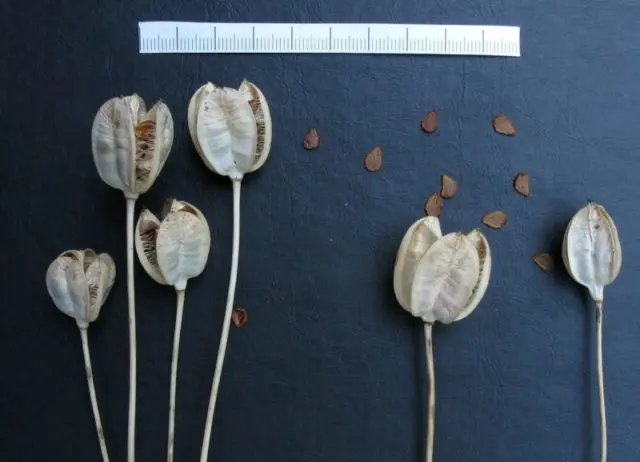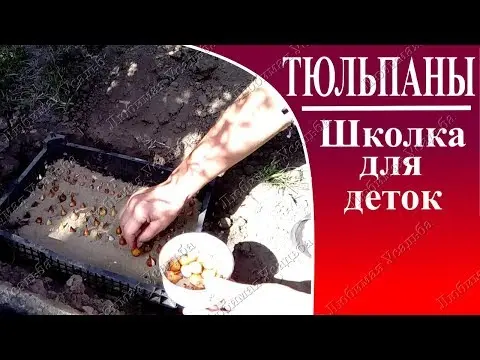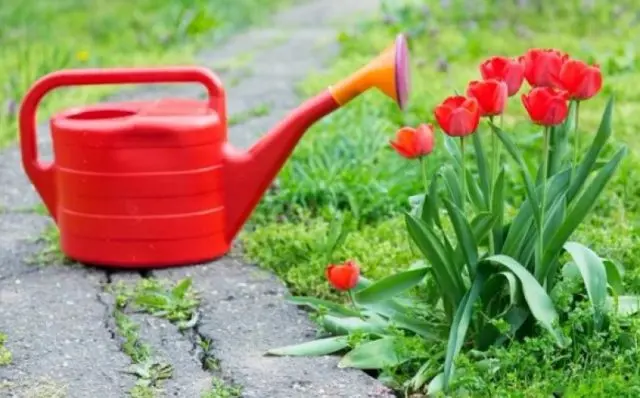Contents
Tulips can be found in almost all summer cottages and city flower beds. Their bright shades will not leave anyone indifferent. Flower growers, seeking to get new species in their collection, exchange bulbs and share the secrets of care. Reproduction of tulips is not as complicated as it seems. If desired, even novice flower growers will cope with it.
Features of reproduction of tulips
There are two options for propagation of culture: seed and bulbous.
To propagate tulips at home, it is recommended to use daughter bulbs, which are separated and planted as independent seedlings.
The seed method at home is not used. It is used by breeders to obtain new varieties.
How does a tulip reproduce
Tulip is a bulbous crop, so it is easiest to propagate by daughter children. You can also use seeds, but in this case, flowering will have to wait a very long time.

The diameter of the children may be different, the largest are able to bloom for next season
Seeds ripen in a box around the end of August, they can also be collected to propagate the culture.
How to propagate tulips
At home, it is best to use the method of reproduction by children. This method is effective and gives a guarantee of obtaining a seedling with all the qualities of the mother plant.
How to propagate a tulip with children
Planting of children is carried out in the autumn. It is believed that in this way the seedlings acclimatize, and in the spring they will not only sprout, but also bloom. Wintering in natural conditions hardens the culture, seedlings are more viable and powerful.
If in the fall the time for planting was missed, the culture can be propagated by children in the spring.
Young tulips most often do not have time to form inflorescences, so in the first year they delight only with lush foliage.
You can prepare the bulbs for spring planting as follows: put them in the refrigerator for several days, then treat them with a solution of potassium permanganate, and after that proceed with the procedure.
The mother bulb of tulips every year forms a daughter bulb with several children, while she herself dies. The replacement bulb may be the same size as the mother bulb, and sometimes it is larger.
The place for planting tulips should be sunny and protected from the wind. The culture prefers sandy loamy soil, therefore, when propagating tulips, it is necessary to provide for the introduction of wood ash. Rotted manure is considered not the best fertilizer for bulbous crops, as it contributes to the development of fungal diseases.
Algorithm for breeding tulips by children:
- Preparation of planting material affects germination. For autumn work, preparatory activities begin at the end of July. To do this, the bulbs are dug up and the child specimens are separated. They are dried and stored at room temperature (20 °C) for one month. Then the temperature in the storage is reduced to 12 °C and the material is held until planting.
- Large specimens are buried in the hole to a depth of 15 cm, and small ones – up to 10 cm.
- Watered with a warm solution of manganese.
- They fall asleep with earth.
How to propagate tulips from seeds
Reproduction of tulips by seeds is suitable for obtaining new varieties. At home, this method is rarely used, because the process is long and it takes from 5 to 7 years before the first flowering.
Seed material ripens at the end of summer, but in order not to delay digging, seed boxes can be cut in early August. They are left indoors to mature.

Seeds are sown in open ground in autumn
In the spring, the first shoots should appear in the form of loops resembling green onion shoots. Seedlings of the first year have only one tubular leaf, which dies off at the beginning of summer (approximately in mid-June). The formed bulb has miniature dimensions, its diameter does not exceed 0,4 cm.
After wintering, a flat leaf sprouts, and two roots are also formed. By the end of summer, the bulb dies off, leaving behind a replacement bulb. The diameter of the baby is already about 1,2 cm. Two-year-old bulbs begin to multiply, forming 1-2 babies. They are deep underground (15-20 cm), so there is no need to dig them out. At the age of three, their diameter is about 2,5 cm. They form 2-3 children, which also go deep into the ground. After 2-3 years, they are dug up and stored throughout August in a dry room, then in early September they are planted in the ground. At the age of 5-6 years, you can get the first flowers.
Rules for caring for tulips after breeding
After breeding, tulips need care.

Regular watering is important during bud formation and during flowering.
For 1 m² of flower beds, about 20 liters of water will be required. You need to water the soil, preventing the liquid from getting on the foliage, otherwise you can provoke the appearance of burns.
The soil must be weeded and loosened even after the tulips have faded. This is easiest to do after watering, when the ground is soft.
To prevent the appearance of weeds in the flower bed, you can mulch the soil. Hay, sawdust, shavings are used as mulch.
After flowering, it is necessary to remove dried flowers. Watering continues for another 10-14 days. At this time, the roots accumulate nutrients, so they can be additionally fed with phosphorus-potassium compounds.
The yellowing of the leaves indicates that the bulbs are ripe and can be dug up.
Conclusion
Reproduction of tulips by children is the most effective and fastest method. By following simple rules, you can quickly increase the number of flowering specimens on the site. Reproduction of culture by seeds at home is practically not used. This method is used by breeders to develop new varieties.









